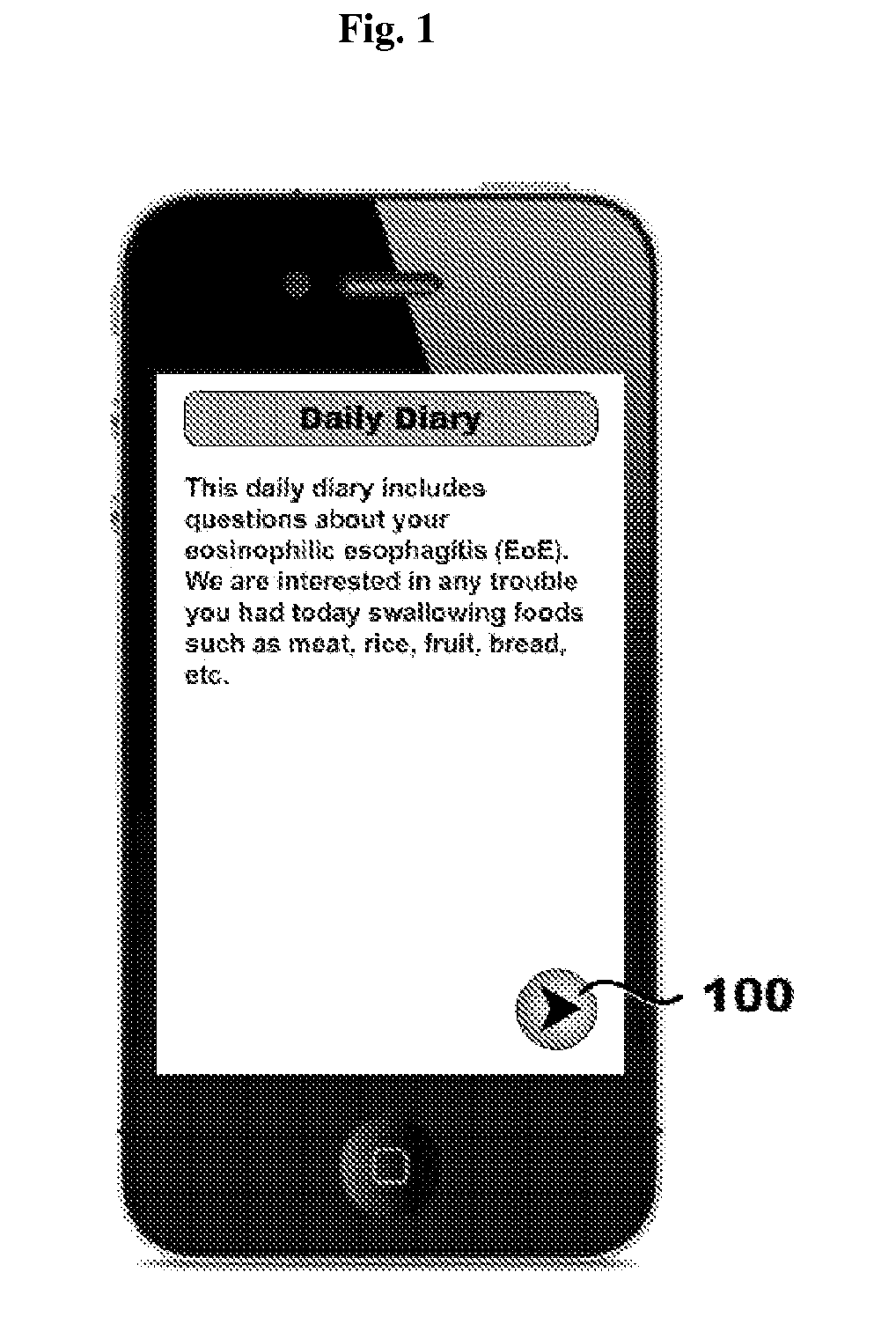Systems, methods, and software for providing a patient-reported outcome measure of dysphagia patients with eosinophilic esophagitis
a technology of eosinophilic esophagitis and system, applied in the field of system, methods and software for providing patient-reported outcome measures of dysphagia patients with eosinophilic esophagitis, can solve the problems of esophageal function loss, delay in treatment of patients with eoe, and failure to thrive, so as to reduce esophageal inflammation and symptoms
- Summary
- Abstract
- Description
- Claims
- Application Information
AI Technical Summary
Benefits of technology
Problems solved by technology
Method used
Image
Examples
example 1
Field Trial of an Electronic Dysphagia Symptom Questionnaire (DSQ) with EoE Patients
Materials and Methods
[0122]Twenty patients participated in Cognitive Interviews (CIs) at the start of the field trial. Thirty-seven patients (18 adolescents and 19 adults) from four recruitment sites participated in the study. Patients had to have a histologic diagnosis of EoE, have persistent dysphagia, and agree to use an electronic DSQ for at least 30 days.
[0123]A paper-based 3-item DSQ (see FIG. 12) was converted into an electronic format for hand-held devices by PHT (PHT Corporation, 500 Rutherford Avenue, Charlestown, Mass. 02129). In this case, the items are text-based questions and the DSQ is a 3-question instrument. However, many items are suitable for eliciting appropriate input from patients including, by way of non-limiting examples, text-based questions, audio questions, video questions, and graphical questions (e.g., pictograms, etc.). These devices were programmed to sound an alarm at ...
example 2
Clinical Study of an Oral Budesonide Solution in Adolescents and Adults with EoE Using an Electronic Dysphagia Symptom Questionnaire (DSQ)
Objective
[0171]To demonstrate that an oral budesonide solution (OBS) induces, over a 12-week course of therapy:[0172]a histologic response in adolescent and adult subjects with EoE; and[0173]a symptom response as measured by the Dysphagia Symptom Questionnaire (DSQ).
Design
[0174]A randomized, placebo-controlled, double-blind study with 2 arms was conducted at 25-30 EoE centers in US. The study included a 24 week open label extension (OLE). Patients were given a placebo for a 4-week period to establish a Baseline for the co-primary endpoint determinations. Patients were then divided into 2 groups, one receiving OBS treatment and the other continued placebo for a 12-week period. Patients in the OLE were given OBS once daily for 24 weeks following a Final Treatment Period Evaluation at week 16.
Treatments and Dose
[0175]Oral budesonide suspension (0.2 m...
PUM
 Login to View More
Login to View More Abstract
Description
Claims
Application Information
 Login to View More
Login to View More - R&D
- Intellectual Property
- Life Sciences
- Materials
- Tech Scout
- Unparalleled Data Quality
- Higher Quality Content
- 60% Fewer Hallucinations
Browse by: Latest US Patents, China's latest patents, Technical Efficacy Thesaurus, Application Domain, Technology Topic, Popular Technical Reports.
© 2025 PatSnap. All rights reserved.Legal|Privacy policy|Modern Slavery Act Transparency Statement|Sitemap|About US| Contact US: help@patsnap.com



